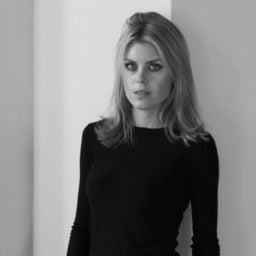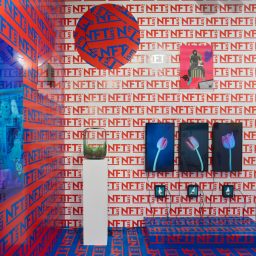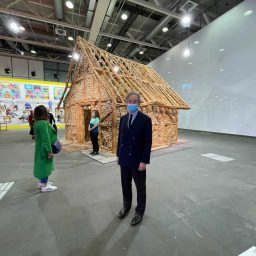This week during Art Basel, those interested in an out-of-the-ordinary art experience might venture to the nearby city of Dornach where Swiss artist Heikedine Günther’s solo exhibition “Concentric Circles” is being presented at the famed Goetheanum, the global headquarters for the Anthroposophical Society. The Goetheanum, which was designed by Rudolph Steiner and built between 1924 and 1928, is a striking edifice, embedded between medieval castles enthroned on a hill (and is named for Steiner’s mentor Johann Wolfgang von Goethe).
The building’s iconic concrete Expressionist architecture finds remarkable harmony with the organic and ovoid shapes that fill Guenther’s paintings. The expansive exhibition includes over 70 works and takes over a large portion of the sprawling building. The space was designed to create a space where holistic thinking and natural philosophy coexist and has often fostered creative thinking. Hilma af Klint, who was a follower of Steiner’s philosophies and considered him something of a mentor, traveled repeatedly to the Goetheanum in her lifetime to take notes on Steiner’s aesthetic, staying and working there for a time in the 1920s.
One can find parallels in Guenther’s work to that of af Klint; her radiating concentric shapes and luminous hue offer a unique narrative about her own artistic journey and the value of creativity as a source of inner power that can facilitate a dialogue between art, architecture, and nature.
Recently we caught up with the artist ahead of the opening to talk about anthropology, serendipity, and the meaning of life.
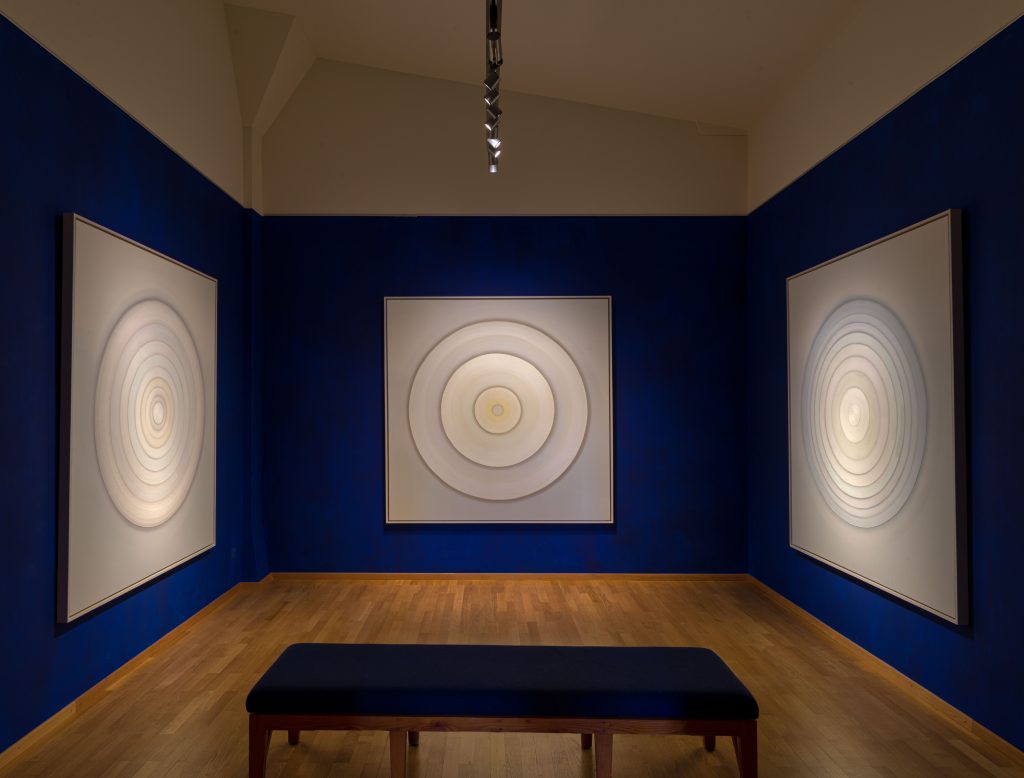
Installation view of Core No. 495, Core No. 496, and Core No. 497 in “Heikedine Guenther: Concentric Circles” at the Goetheanum, 2021. Courtesy of the artist.
You’re very involved with the field of anthropology. Why is that?
I’m not a pure anthropologist, I’m simply profoundly interested in life and the meaning of it. This fascination has increased over the past year, in the wake of the pandemic. I believe that when one is interested in that, then an investigation into anthropology is paramount.
I really believe in coincidence or serendipity. Especially in the idea that those things that happen to you in life, are supposed to be. I don’t fight it, I work with it, which is a very anthropological train of thought.
Your forthcoming show during Art Basel reflects this ethos. What are you trying to transmit with your work?
Yes, especially since the pandemic. It has had such a profound impact on all of our lives that it led me to look at the origins of anthropology even more than before.
The space is a huge aspect of the way your work will be shown. Tell me more about the exhibition space.
It was created by Rudolf Steiner, who is a founder of anthropological thinking. It’s the antithesis of a ‘white cube’ or regular exhibition space, which I’m very happy about. My work will be shown in this space, which isn’t a museum. Rather, it’s the International Center for Anthropology. My exhibition is possibly the first that will prove a real synergy to the structure. It will really vibrate and move with my subject matter: making the unseen visible, the contrast between good and evil, light and dark, life and death.
Hilma Af Klint is an artist that could be described as a kindred spirit. How do your works compare or contrast?
Hilma drew the visions which she had. In contrast, I create work that is derived from my emotions and reactions to certain situations and vibes. I believe her work is more spiritual, with a strong focus on her visions. I started out with that vibe but then evolved into a more abstract aesthetic. Before I create my work, there’s a lot of research involved and a lot of thought. It’s more psychological rather than spiritual.
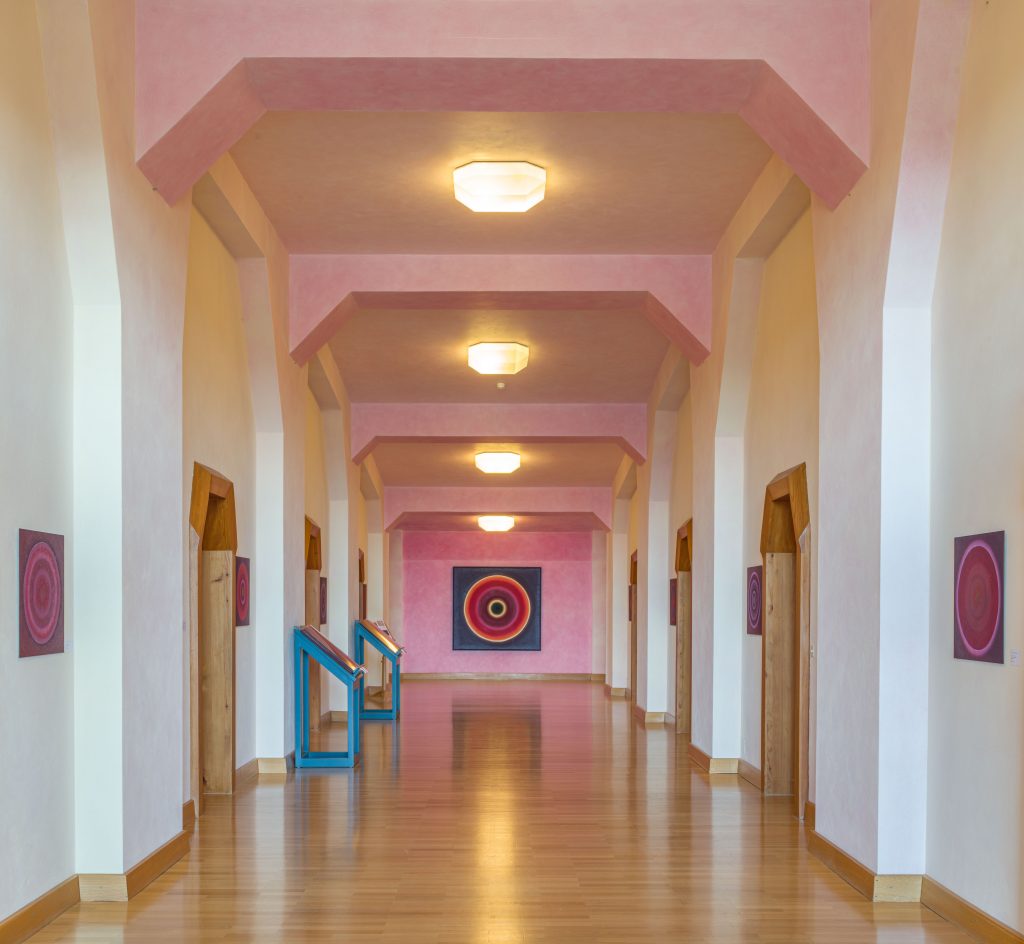
Installation view “Heikedine Guenther: Concentric Circles” at the Goetheanum, 2021. Courtesy of the artist.
Many artists are currently commenting on socio-political issues. Is that something that you aspire to or are already communicating with your work?
No, not really to be honest. At least, not yet. Though I do believe that it’s very important for artists to discuss current themes within their work. To reflect the zeitgeist. We all see things in different ways and through different eyes. It’s important to remember that and be conscious of it and accept differences.
What would you like your legacy to be?
That’s a very important question. I would like to give future generations the feeling and idea that everything is connected. It’s also about giving viewers an opportunity to discover elements about themselves when they’re connecting with my work. I really believe that we all have different strengths and potentials, and I hope that viewers can discover that through my work.
What else do you have planned for the near future?
I have several exciting projects which I can’t reveal at the moment. But I am driven now by different motivations. Growth and evolving into different dimensions is always a concern and that’s important to me for the future. I don’t want to please everyone. I want to make an impact and create work that’s important also for my personal growth.
If you could have dinner with any three artists, living or dead, who would you choose?
Sean Scully, Mark Rothko, Hilma af Klint.
“Heikedine Günther: Concentric Circles” is on view through September 30, 2021.




